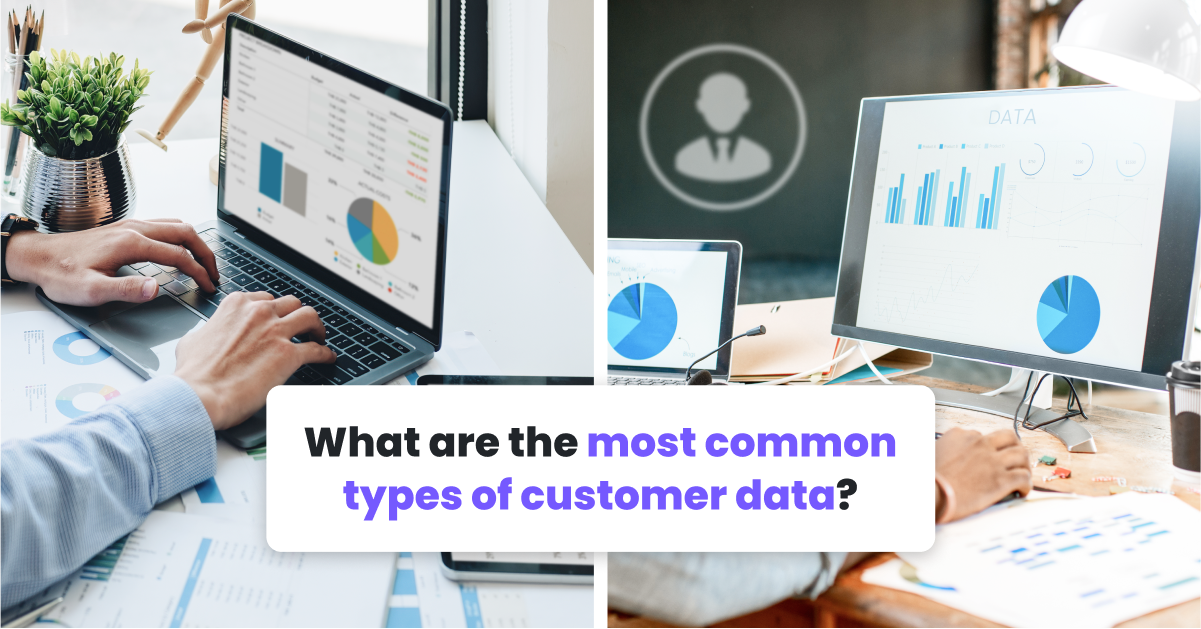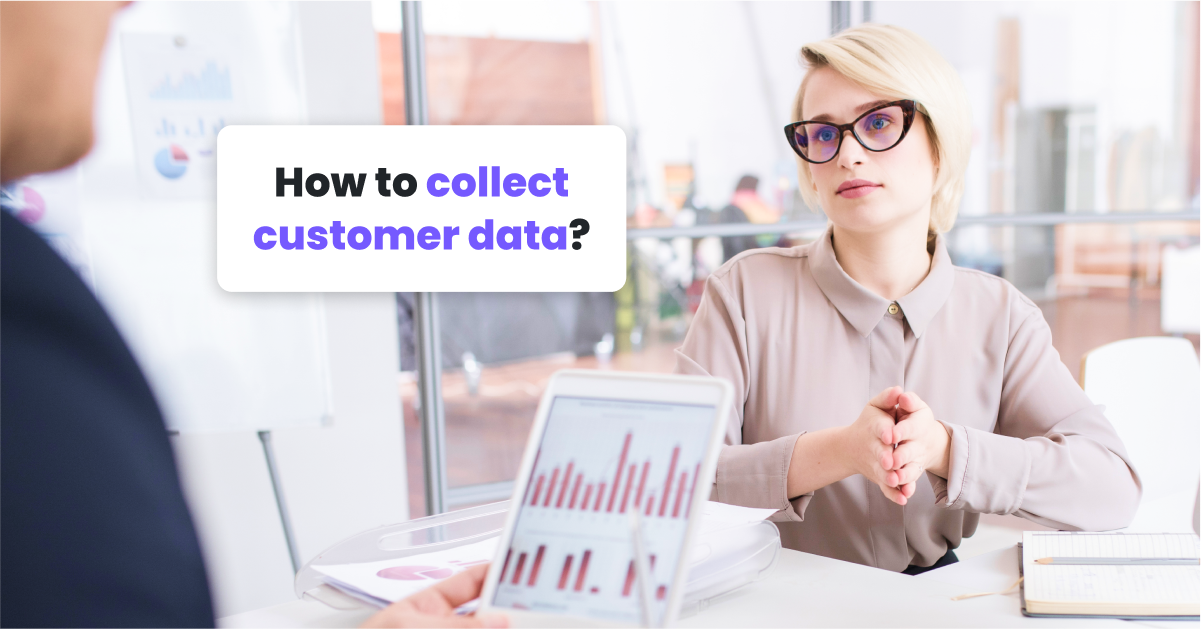You're probably looking for new resources to improve your business and marketing strategy every day. You're checking out blogs, YouTube videos, webinars, or podcasts...
The good news is... you don't need to look further. Because customer data will help you run a successful business!
But here's the thing...
Due to the increasing policies to protect the privacy of internet users, it can be challenging to collect customer data.
But that doesn't mean you can't! Because in this blog, we'll discuss...
- What is customer data?
- What are the most common types of customer data?
- Why should you use customer data for your eCommerce business?
- How to collect customer data without invading their privacy?
Want to know more? Let's deep dive!
What is customer data?
Customer data is the collection of demographic, behavioral, attitudinal, and personal information from your customers.
It's an important part of your business because it makes it easier for you to understand your customers. Your customer database can also include contact information.
Data usually is split into two types, which are:
- Qualitative data
- Quantitative data
Quantitative data highlights the numbers. For example, the average number of customers repeatedly purchase from your eCommerce store.
While qualitative data doesn't focus on numbers. You can gather these from interviews, surveys, reviews, and more.
But wait... there are different types of customer data. Let's talk about them!
What are the most common types of customer data?

- Basic data. Basic customer data are some personal information from your customers. It includes name, location, home address, contact, job title, etc.
- Behavioral data. Describes the actions or behavior of your customers toward your eCommerce brand.
- Attitudinal data. This information highlights how the customers feel about your brands or product. This also includes their opinions about their customer experience.
- Demographic data. This information includes your customers' ethnicity, nationality, gender, income, and more.
- Interaction data. This refers to how your customers interact to achieve their goals in your eCommerce store.
- Transactional data. Transactional customer data are the transaction records of users or customers.
Now that you know the types of customer data, you're probably wondering...
Why should you use customer data?
Data collection can...
1. Give you insights
If you have questions regarding your business, customer data can answer those.
For example, you're wondering why certain products aren't making so many sales. You need to check your customer data and see what products they usually buy.
You also need to check the information of your customers. What are their genders? Where do they live? This information might play a significant role in the product they order.
Customer data can also help you...
2. Understand your customer better
You can understand your customers better through customer data. How? Because if you know who they are and how they feel about your business, you can empathize with their needs.
You can see why they choose ABC over XYZ when analyzing customer data. This will also help you...
3. Create better decisions for your business
If you see a specific pattern for your customers' behavior, then you can create better decisions for your business based on that.
Customer data will help you decide the best for your business and improve it. For example, looking at the data will help you if you're wondering what the next products to launch are.
You can check their behavior, attitude, and interaction with your eCommerce business. So, want to get to the best part of this blog?
How to collect customer data?

Collecting customer data is a bit tricky because of all the privacy laws and regulations, but here are some ways to collect data without violating their privacy.
1. Conduct customer interviews
Conducting customer interviews is one of the most effective ways to collect customer data. You can ask a series of questions based on what you're trying to achieve.
For customer interviews, you can gather more qualitative data. You can set a call as a group or an individual with your customers to get their insights. This will help you get to know them better.
You can also ask for testimonials that you can use on your website. It's up to you!
But here are some questions you can ask if you want to improve your products:
- What do you like about our products?
- What are the things we can improve on our products?
- How can our products help you better?
If you want to know about their goals, you can ask them:
- What are you usually looking for when using our website? Inspiration? Specific product categories?
- What's the end goal when you're using our website? Browsing? Making a purchase?
- What do they want to see or experience when using our website?
If you want to know how you can improve customer experience, you can ask:
- How easy is it to shop on our website?
- How was the customer support you experienced?
- Were you able to finish your transaction smoothly?
You see, the key to gathering relevant customer data is by asking the right questions. So, before starting one... make sure to know your goals so you can prepare the right questions.
If you don't want to conduct interviews, you can...
2. Create customer surveys
You need to create customer surveys to know what your customers think and feel about your business. This will save you and your customers time if you don't want to hop on calls.
You can send customer surveys via email where they can quickly answer. Survey forms can include:
- Star rating system
- Point rating system
- Multiple choice
Having these options is easier for your customers to answer the survey. This will also make your customer data analysis trouble-free because you can see some quantitative results.
Another way to get customer data is...
3. Have loyalty programs
Loyalty programs are one of the most efficient ways to increase customer retention. But it's also one way to collect customer data.
How? Because those who will sign up for your program will have to provide basic information, like name, location, email address, and contact number.
You can also analyze their purchase behavior, shopping preferences, etc. Then you can use them to create a better customer experience.
You can also get customer data if you...
4. Get leads from social media platforms
Social media platforms are also helpful in gathering data. You can achieve this by generating leads.
What are leads? Leads are your prospective customers.
They may not make a purchase yet, but they're willing to know more about your brand. So, they're providing you with their contact information... like name and email address.
You can create an ad and choose "get more leads" as an objective. Some prominent channels that can help you are Facebook and LinkedIn. Or from your website by having an opt-in newsletter option.
But that's how you can get more customer data from social media platforms.
5. Check the transaction records
You can check the transactional customer data if you want to learn more about the preferences and behavior of your customers.
For example, you noticed that Customer A only purchases during the holidays. You can create a personalized email or message based on their data.
Or you noticed that Customer B is purchasing products for dry and sensitive skin. You can create personalized recommendations based on that, too.
See all the benefits and ways to collect customer data? You can totally do it yourself!
Collect customer data correctly and use them to improve your business!
Collecting customer data with their consent is critical to ensure you are not breaking the law. So, when implementing these tips, it's essential to tell them what you will use their data for.
You must:
- Have a Privacy Policy page on your website.
- Include a tick box where prospects can consent to give their information and confirm that they agree to terms and conditions.
- Disclose where you're going to use their survey and interview answers.
- Give them the option to remain anonymous when conducting surveys or interviews.
Keep these in mind to protect both your business and customers!
And if you want to improve your products through customer surveys, here are...




